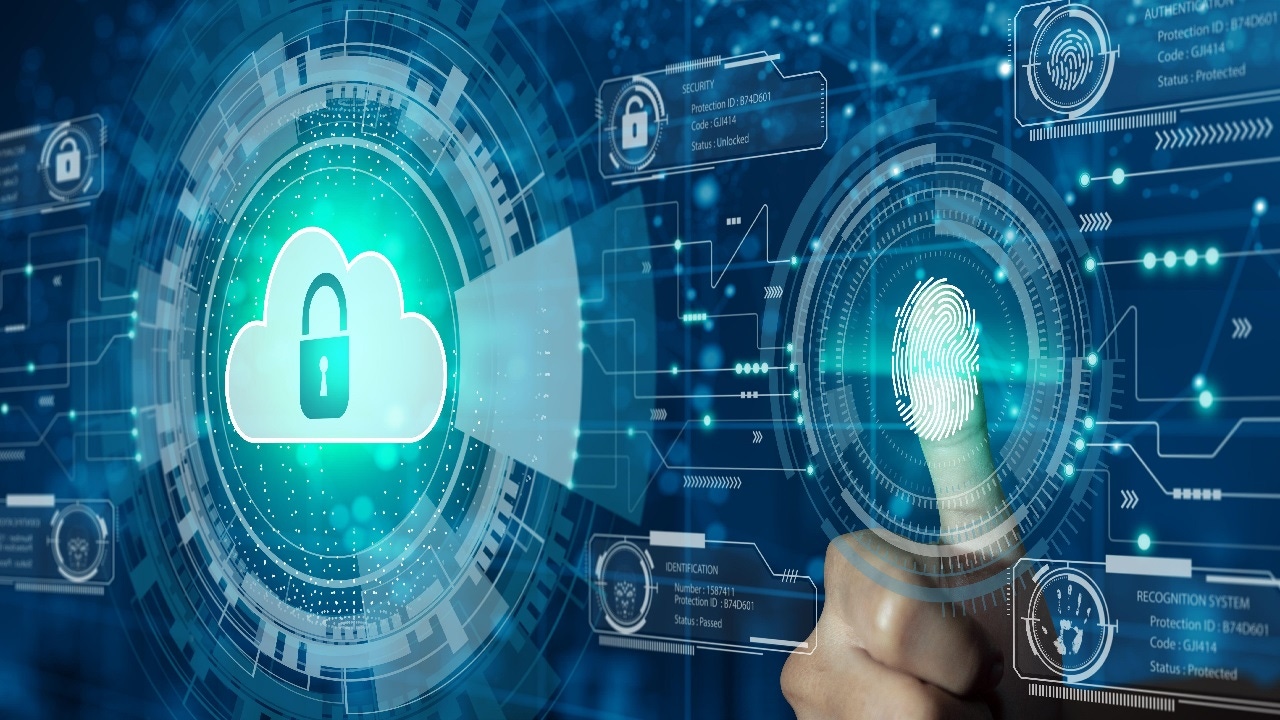Quote for the day:
"Be willing to make decisions. That's the most important quality in a good leader." -- General George S. Patton, Jr.
Building blocks – what’s required for my business to be SECURE?

Zero Trust Architecture involves a set of rules that will ensure that you will
not let anyone in without proper validation. You will assume there is a breach.
You will reduce privileges to their minimum and activate them only as needed and
you will make sure that devices connecting to your data are protected and
monitored. Enclave is all about aligning your data’s sensitivity with your
cybersecurity requirements. For example, to download a public document, no
authentication is required, but to access your CRM, containing all your
customers’ data, you will require a username, password, an extra factor of
authentication, and to be in the office. You will not be able to download the
data. Two different sensitivities, two experiences. ... The leadership team is
the compass for the rest of the company – their north star. To make the right
decision during a crisis, you much be prepared to face it. And how do you make
sure that you’re not affected by all this adrenaline and stress that is caused
by such an event? Practice. I am not saying that you must restore all your
company’s backups every weekend. I am saying that once a month, the company
executives should run through the plan. ... Most plans that were designed and
rehearsed five years ago are now full of holes.
Beyond Culture: Addressing Common Security Frustrations

A majority of security respondents (58%) said they have difficulty getting
development to prioritize remediation of vulnerabilities, and 52% reported
that red tape often slows their efforts to quickly fix vulnerabilities. In
addition, security respondents pointed to several specific frustrations
related to their jobs, including difficulty understanding security findings,
excessive false positives and testing happening late in the software
development process. ... If an organization sees many false positives, that
could be a sign that they haven’t done all they can to ensure their security
findings are high fidelity. Organizations should narrow the focus of their
security efforts to what matters. That means traditional static application
security testing (SAST) solutions are likely insufficient. SAST is a powerful
tool, but it loses much of its value if the results are unmanageable or lack
appropriate context. ... Although AI promises to help simplify software
development processes, many organizations still have a long road ahead. In
fact, respondents who are using AI were significantly more likely than those
not using AI to want to consolidate their toolchain, suggesting that the
proliferation of different point solutions running different AI models could
be adding complexity, not taking it away.
Significant Gap Exists in UK Cyber Resilience Efforts

A persistent lack of skilled cybersecurity professionals in the civil service
is one reason for the persistent gap in resilience, parliamentarians wrote.
"Government has been unwilling to pay the salaries necessary to hire the
experienced and skilled people it desperately needs to manage its
cybersecurity effectively." Government figures show the workforce has grown
and there are plans to recruit more experts - but a third of cybersecurity
roles are either vacant "or filled by expensive contractors," the report
states. "Experience suggests government will need to be realistic about how
many of the best people it can recruit and retain." The report also faults
government departments for not taking sufficient ownership over cybersecurity.
The prime minister's office for years relied on departments to perform a
cybersecurity self-assessment, until in 2023 when it launched GovAssure, a
program to bring in independent assessors. GovAssure turned the
self-assessments on their head, finding that the departments that ranked
themselves the highest through self-assessment were among the less secure.
Continued reliance on legacy systems have figured heavily in recent critiques
of British government IT, and it does in the parliamentary report, as well.
"It is unacceptable that the center of government does not know how many
legacy IT systems exist in government and therefore cannot manage the
associated cyber risks."
How CIOs Can Boost AI Returns With Smart Partnerships
CIOs face an overwhelming array of possibilities, making prioritization
critical. The CIO Playbook 2025 helps by benchmarking priorities across
markets and disciplines. Despite vast datasets, data challenges persist as
only a small, relevant portion is usable after cleansing. Generative AI helps
uncover correlations humans might miss, but its outputs require rigorous
validation for practical use. Static budgets, growing demands and a shortage
of skilled talent further complicate adoption. Unlike traditional IT, AI
affects sales, marketing and customer service, necessitating
cross-departmental collaboration. For example, Lenovo's AI unifies customer
service channels such as email and WhatsApp, creating seamless interactions.
... First, go slow to go fast. Spend days or months - not years - exploring
innovations through POCs. A customer who builds his or her own LLM faces
pitfalls; using existing solutions is often smarter. Second, prioritize
cross-collaboration, both internally across departments and externally with
the ecosystem. Even Lenovo, operating in 180 markets, relies on partnerships
to address AI's layers - the cloud, models, data, infrastructure and services.
Third, target high-ROI functions such as customer service, where CIOs expect a
3.6-fold return, to build boardroom support for broader adoption.
How to Stop Increasingly Dangerous AI-Generated Phishing Scams

With so many avenues of attack being used by phishing scammers, you need
constant vigilance. AI-powered detection platforms can simultaneously analyze
message content, links, and user behavior patterns. Combined with
sophisticated pattern recognition and anomaly identification techniques, these
systems can spot phishing attempts that would bypass traditional
signature-based approaches. ... Security awareness programs have progressed
from basic modules to dynamic, AI-driven phishing simulations reflecting
real-world scenarios. These simulations adapt to participant responses,
providing customized feedback and improving overall effectiveness. Exposing
team members to various sophisticated phishing techniques in controlled
environments better prepares them for the unpredictable nature of AI-powered
attacks. AI-enhanced incident response represents another promising
development. AI systems can quickly determine an attack's scope and impact by
automating phishing incident analysis, allowing security teams to respond more
efficiently and effectively. This automation not only reduces response time
but also helps prevent attacks from spreading by rapidly isolating compromised
systems.
Immutable Secrets Management: A Zero-Trust Approach to Sensitive Data in Containers
We address the critical vulnerabilities inherent in traditional secrets
management practices, which often rely on mutable secrets and implicit trust.
Our solution, grounded in the principles of Zero-Trust security, immutability,
and DevSecOps, ensures that secrets are inextricably linked to container
images, minimizing the risk of exposure and unauthorized access. We introduce
ChaosSecOps, a novel concept that combines Chaos Engineering with DevSecOps,
specifically focusing on proactively testing and improving the resilience of
secrets management systems. Through a detailed, real-world implementation
scenario using AWS services and common DevOps tools, we demonstrate the
practical application and tangible benefits of this approach. The e-commerce
platform case study showcases how immutable secrets management leads to
improved security posture, enhanced compliance, faster time-to-market, reduced
downtime, and increased developer productivity. Key metrics demonstrate a
significant reduction in secrets-related incidents and faster deployment
times. The solution directly addresses all criteria outlined for the Global
Tech Awards in the DevOps Technology category, highlighting innovation,
collaboration, scalability, continuous improvement, automation, cultural
transformation, measurable outcomes, technical excellence, and community
contribution.
The Network Impact of Cloud Security and Operations

Network security and monitoring also change. With cloud-based networks, the
network staff no longer has all its management software under its direct
control. It now must work with its various cloud providers on security. In
this environment, some small company network staff opt to outsource security
and network management to their cloud providers. Larger companies that want
more direct control might prefer to upskill their network staff on the
different security and configuration toolsets that each cloud provider makes
available. ... The move of applications and systems to more cloud services is
in part fueled by the growth of citizen IT. This is when end users in
departments have mini IT budgets and subscribe to new IT cloud services, of
which IT and network groups aren't always aware. This creates potential
security vulnerabilities, and it forces more network groups to segment
networks into smaller units for greater control. They should also implement
zero-trust networks that can immediately detect any IT resource, such as a
cloud service, that a user adds, subtracts or changes on the network. ...
Network managers are also discovering that they need to rewrite their disaster
recovery plans for cloud. The strategies and operations that were developed
for the internal network are still relevant.
Three steps to integrate quantum computing into your data center or HPC facility
Just as QPU hardware has yet to become commoditized, the quantum computing
stack remains in development, with relatively little consistency in how
machines are accessed and programmed. Savvy buyers will have an informed
opinion on how to leverage software abstraction to accomplish their key goals.
With the right software abstractions, you can begin to transform quantum
processors from fragile, research-grade tools into reliable infrastructure for
solving real-world problems. Here are three critical layers of abstraction
that make this possible. First, there’s hardware management. Quantum devices
need constant tuning to stay in working shape, and achieving that manually
takes serious time and expertise. Intelligent autonomy provided by specialist
vendors can now handle the heavy lifting – booting, calibrating, and keeping
things stable – without someone standing by to babysit the machine. Then
there’s workload execution. Running a program on a quantum computer isn’t just
plug-and-play. You usually have to translate your high-level algorithm into
something that works with the quirks of the specific QPU being used, and
address errors along the way. Now, software can take care of that translation
and optimization behind the scenes, so users can just focus on building
quantum algorithms and workloads that address key research or business
needs.
Where Apple falls short for enterprise IT

First, enterprise tools in many ways could be considered a niche area of
software. As a result, enterprise functionality doesn’t get the same attention
as more mainstream features. This can be especially obvious when Apple tries to
bring consumer features into enterprise use cases — like managed Apple Accounts
and their intended integration with things like Continuity and iCloud, for
example — and things like MDM controls for new features such a Apple
Intelligence and low-level enterprise-specific functions like Declarative Device
Management. The second reason is obvious: any piece of software that isn’t ready
for prime time — and still makes it into a general release — is a potential
support ticket when a business user encounters problems. ... Deployment might be
where the lack of automation is clearest, but the issue runs through most
aspects of Apple device and user onboarding and management. Apple Business
Manager doesn’t offer any APIs that vendors or IT departments can tap into to
automate routine tasks. This can be anything from redeploying older devices,
onboarding new employees, assigning app licenses or managing user groups and
privileges. Although Apple Business Manager is a great tool and it functions as
a nexus for device management and identity management, it still requires more
manual lifting than it should.
Getting Started with Data Quality

Any process to establish or update a DQ program charter must be adaptable. For
example, a specific project management or a local office could start the initial
DQ offering. As other teams see the program’s value, they would show initiative.
In the meantime, the charter tenets change to meet the situation. So, any DQ
charter documentation must have the flexibility to transform into what is
currently needed. Companies must keep track of any charter amendments or
additions to provide transparency and accountability. Expect that various teams
will have overlapping or conflicting needs in a DQ program. These people will
need to work together to find a solution. They will need to know the discussion
rules to consistently advocate for the DQ they need and express their
challenges. Ambiguity will heighten dissent. So, charter discussions and
documentation must come from a well-defined methodology. As the white paper
notes, clarity, consistency, and alignment sit at the charter’s core. While
getting there can seem challenging, an expertly structured charter template can
prompt critical information to show the way. ... The best practices documented
by the charter stem from clarity, consistency, and alignment. They need to cover
the DQ objectives mentioned above and ground DQ discussions.
No comments:
Post a Comment